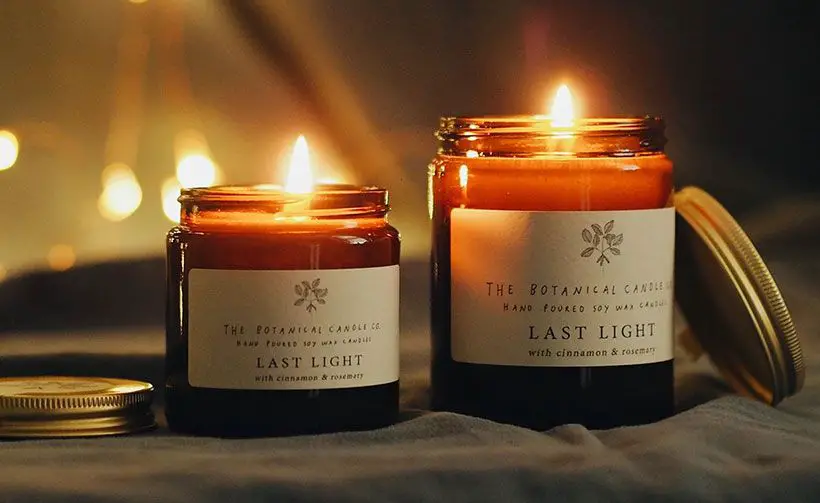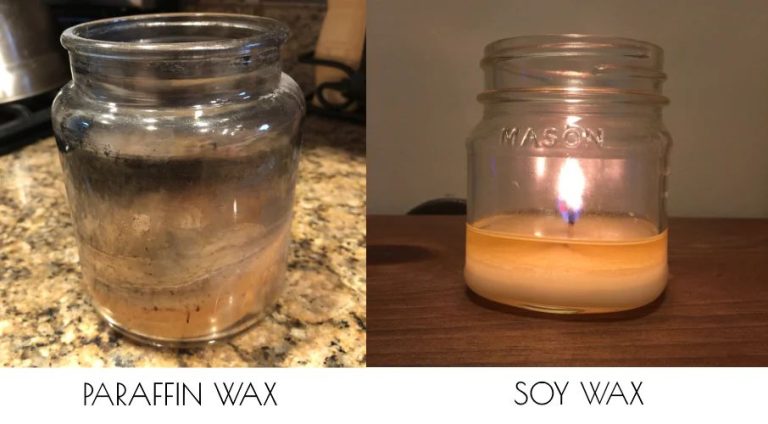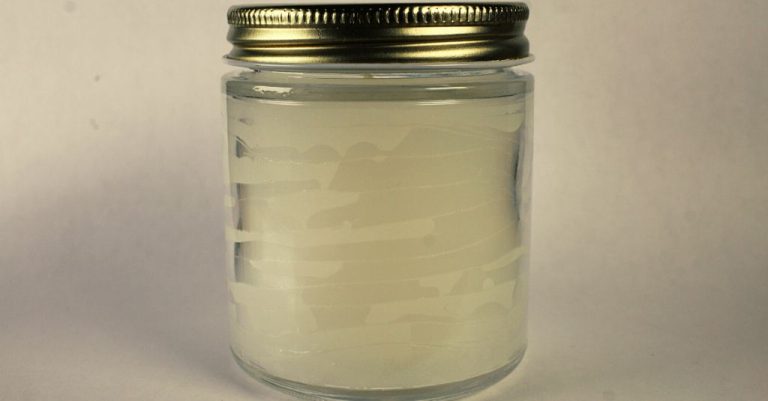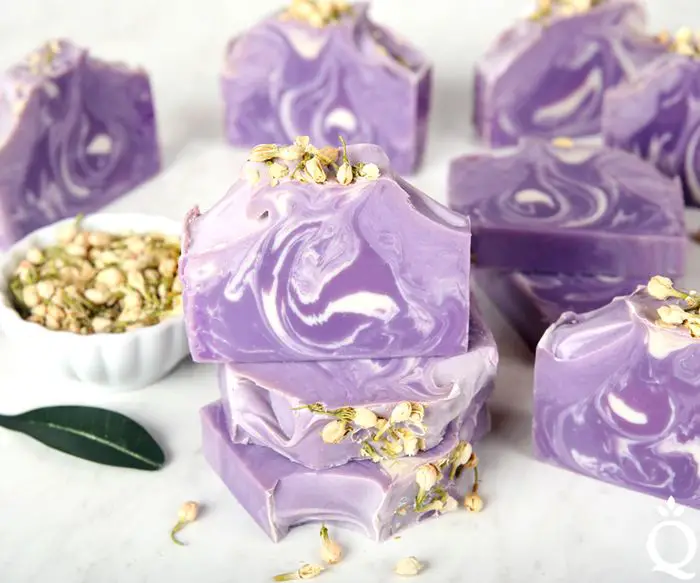Can You Mix Coconut And Soy Wax?
Introducing Coconut and Soy Wax
Coconut wax is made from the oil of coconut palms. It has a high melting point compared to other waxes, typically around 92-95°F. Some benefits of coconut wax include its excellent scent throw, clean burn, and ability to hold fragrance oils longer than other waxes. Coconut wax also produces less soot than paraffin wax, making it a good choice for people with allergies (source).
Soy wax is made from hydrogenated soybean oil. It has a lower melting point than coconut wax, around 115-125°F. Soy wax is known for its excellent scent throw and ability to hold fragrances. It also burns cleanly without producing much soot or smoke. Soy wax blended candles tend to burn slower and cooler than pure paraffin candles (source).
Reasons for Blending Waxes
Coconut wax and soy wax each have their own unique properties and benefits when used on their own in candle making. However, many candle makers find blending the two waxes together allows them to capitalize on the strengths of each while minimizing the weaknesses. Here are some key reasons candle makers blend coconut and soy wax:
Each wax has strengths and weaknesses on its own. Coconut wax burns cleanly and evenly, produces minimal soot, and has excellent scent throw. However, it can be prone to oil sweating. Soy wax has great adhesion properties for holding fragrance and dye, but may not burn as hot or cleanly as coconut wax. Blending allows you to get the best of both worlds.
Popular wax blend ratios are 60% soy wax with 40% coconut wax, or 80% soy wax with 20% coconut wax. The higher the percentage of coconut wax, the hotter and cleaner the burn. The more soy wax, the better the scent throw and color adhesion.
By custom blending coconut and soy wax, candle makers can create a wax with ideal properties for their specific candle design or fragrance oil. The blend takes advantage of coconut wax’s high melt point and full scent throw, along with soy wax’s ability to hold fragrance and dye. Candle makers can experiment to find their preferred blend ratio.
Considerations When Blending
When blending soy and coconut wax, there are a few key considerations to keep in mind for the best results:
Melting Points – Soy wax has a melting point around 125-135°F, while coconut wax melts around 76-86°F (source). The different melting temperatures means you’ll need to heat the wax blend to around 150°F to ensure both waxes fully melt and blend together smoothly.
Fragrance Load – Coconut wax can hold a higher fragrance load than soy, around 1 oz of fragrance per 1 lb of wax. Soy wax fragrance load is around 6-8% (source). When blending the waxes, you may need to adjust your fragrance amount depending on the ratio to avoid the scent being too light or overpowering.
Colour Stability – Soy wax tends to discolor over time as it absorbs fragrance oils. Coconut wax has better colour stability. When blending, the coconut wax can help offset some discoloration, but you may still need to account for fading, especially with lighter colours.
How to Blend Coconut and Soy Wax
Blending coconut and soy wax is a simple process but requires paying close attention to temperatures. Here are the steps for properly melting and mixing the waxes:
Start by melting the soy wax in a double boiler or crock pot until fully liquefied. Heat the soy wax to 180-185°F. As soy wax melts at a lower temperature than coconut wax, it’s important not to overheat the soy or it can lose its scent throw. Next, add coconut wax flakes and stir gently as they melt. Coconut wax melts at 92-97°F so does not require high heat.
Avoid overheating the coconut wax, as going above 185°F can cause separation when blended with soy wax. Use a thermometer and adjust the heat to maintain the temperature between 180-185°F as you mix. Thoroughly stir the melted coconut and soy wax together by hand or use a stick blender for a smoother, more uniform blend.[https://candlemaking.com.au/blogs/videos-fact-sheets/mixing-your-coconut-and-soy-waxes-for-container-candles]
Stick blending for 2-3 minutes creates a smooth, fully incorporated blend. Hand stirring can leave small pockets of unmixed wax. Let the combined wax cool slightly and stir again before pouring into containers.
Recommended Blend Ratios
When blending coconut and soy wax, there are some common starting ratios that candle makers recommend trying first:
– 60% coconut wax and 40% soy wax – This blend combines the benefits of both waxes nicely. The soy wax helps anchor the coconut wax, while the coconut wax allows for a stronger scent throw and smoother finish.
– 80% coconut wax and 20% soy wax – Use this blend when you want more of the coconut wax benefits like scent throw and hardness. The smaller amount of soy wax still provides an anchoring effect.
In general, use more coconut wax in your blend when you want:
- A strong hot and cold scent throw
- Increased hardness and stability
- A smooth finish with less frosting
Use more soy wax when you want:

- A natural, earthy finished look
- Soy’s natural scent
- Lower melting point for containers
Test different ratios to find your preferred coconut-soy blend. Keep detailed notes on how each ratio performs.
Testing Your Custom Blend
Once you have created your custom soy-coconut wax blend, it is important to test it thoroughly before making candles. Here are some key tests to conduct on your custom blend:
- Melt point – Melt a small sample of the blended wax and test the temperature at which it melts using a thermometer. The melt point of blended waxes can differ from the individual waxes.
- Fragrance load – Add different amounts of fragrance oil to samples of the wax, such as 6%, 8%, 10%. Observe how well each sample retains scent to find the ideal fragrance load for your blend.
- Wick testing – Make small candles using different wick sizes and monitor the melt pool, flame height, and burn time to find the optimal wick for your blend.
- Appearance – Check the color, clarity, and texture of the cooled wax. Adjust the ratio if needed to achieve your desired appearance.
Fine-tuning your soy-coconut wax blend ratio is key. Start with a 1:1 ratio and adjust in increments of 10% until you achieve your preferred performance, scent throw, and appearance. Keep detailed notes on each iteration of the blend.
Be sure to follow proper candle testing safety precautions like using a thermometer, having a fire extinguisher on hand, and testing in a well-ventilated area. With careful testing and tweaking, you can create the perfect custom soy-coconut wax blend for candle making. For more tips, see this guide.
Storing Blended Wax
Proper storage is important for maintaining the integrity and lifespan of blended wax. Here are some tips for storing blended wax:
Store wax in a cool, dry area away from direct sunlight and heat sources according to this source. A garage, basement, or cupboard works well. Fluctuating temperatures can cause wax to sweat and lose fragrance.
Use airtight, sealable containers like plastic bins or buckets with lids to prevent contamination. Glass jars also work if sealed tightly. Allow the wax to fully harden before sealing containers according to this source.
Blended wax can last 1-2 years with proper storage according to manufacturer recommendations. Over time, the fragrance may diminish. Check wax occasionally and re-blend or add fragrance if needed.
Label each batch with the blend ratio, date, and any added scents. Rotate stock and use older batches first. Keep an inventory to track usage.
Troubleshooting
When blending coconut and soy waxes, some common issues can arise. Here are some troubleshooting tips for fixing them:
Candle Frosting
Frosting occurs when wax crystals form on the surface of the candle. It’s common with soy wax blends due to temperature changes during cooling (https://www.candlescience.com/wax/soy-wax-trouble-shooting-guide/). To prevent frosting, avoid temperature fluctuations by cooling candles slowly in a low-draught area.
Wet Spots
Wet spots indicate the fragrance oil has not fully bonded with the wax. Make sure to use the recommended fragrance load for your wax blend. Overloading fragrance can lead to wet spots (https://villagecraftandcandle.com/blogs/news/top-10-candle-making-problems-and-how-to-solve-them).
Sinkholes
Sinkholes occur when an area of wax melts faster than the rest. This can be caused by adding fragrance at too high of a temperature. Make sure the wax is below 185°F before adding fragrance.
Example Soy-Coconut Candle Recipe
Here is a simple soy-coconut candle recipe to demonstrate blending ratios in action:
Ingredients:
- 8 oz soy wax
- 2 oz coconut wax
- 1 oz fragrance oil or essential oil
- Dye (optional)
Instructions:
- Prepare an 8 oz tin, mason jar or other heat safe candle vessel.
- Melt the soy wax and coconut wax together in a double boiler until fully combined and liquified.
- Remove from heat and allow to slightly cool.
- Add fragrance or essential oil and stir to combine.
- Add liquid dye if desired and stir.
- Carefully pour into container.
- Allow to fully set undisturbed.
This 80% soy wax, 20% coconut wax blend creates a smooth burning candle with good scent throw. The soy wax provides a clean burn while the coconut gives better glass adhesion and wax pool structure. Adjust the ratios to find your perfect custom soy-coconut blend!
In Summary
Blending coconut and soy wax gives candle makers the ability to customize the properties and performance of their wax. By tweaking the ratios, you can create a wax blend that offers the best qualities of both components. Soy wax provides a smooth surface for jar candles, while coconut wax makes excellent container candles with a nice wax pool. By combining them, you get the best of both worlds.
When blending the waxes, it’s important to melt and mix them thoroughly to create an even blend. Start with a 50/50 ratio and test how that performs. Adjust the ratios gradually until you achieve your desired properties. Keep notes so you can replicate your custom blend in the future.
Properly stored blends will remain stable over time. Keep blended wax in an airtight container out of direct sunlight and extreme temperatures. If you notice any separation, simply re-melt and remix before use. With some testing and tweaking, you can create the perfect soy-coconut wax blend for your candles.





